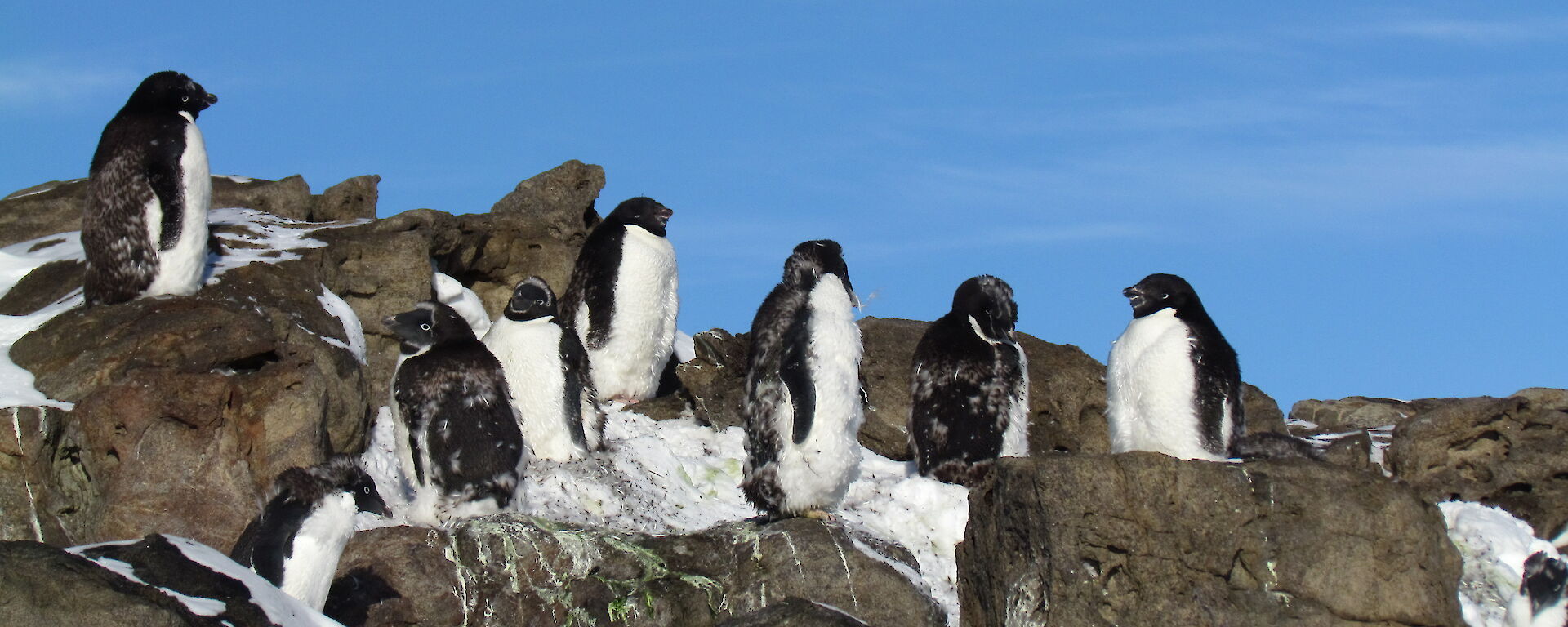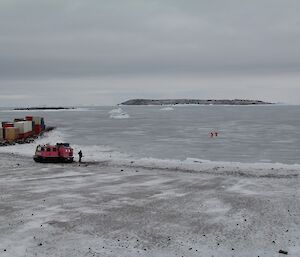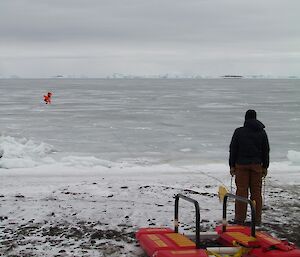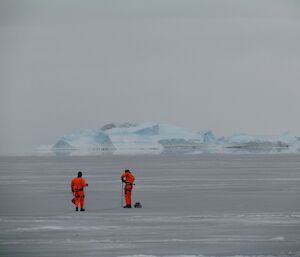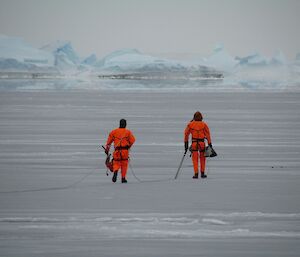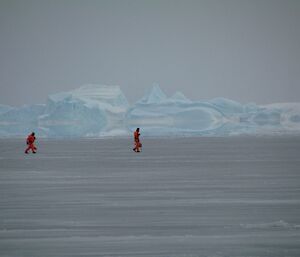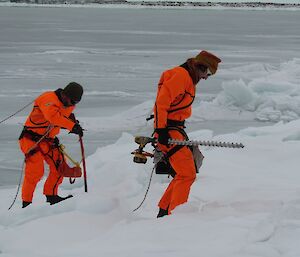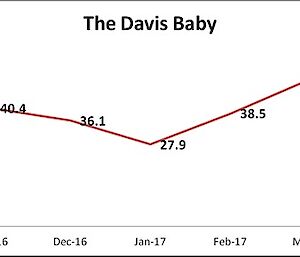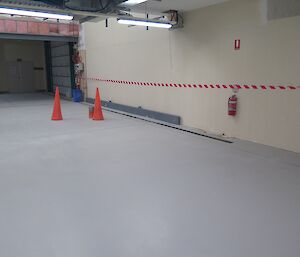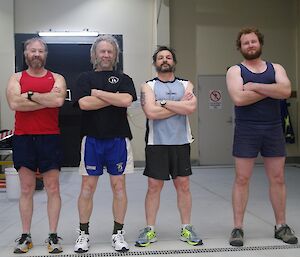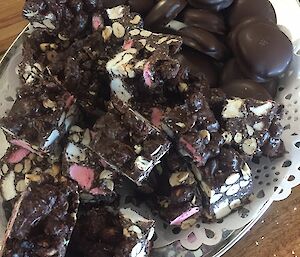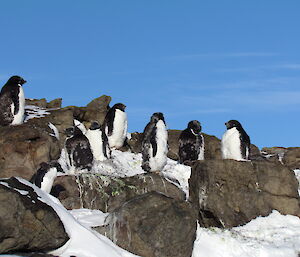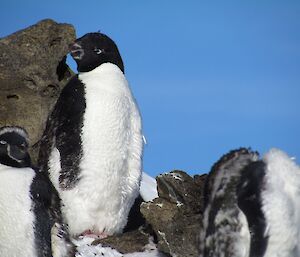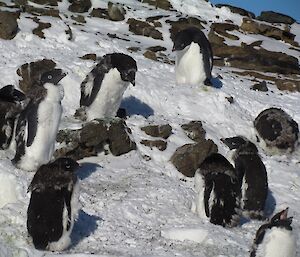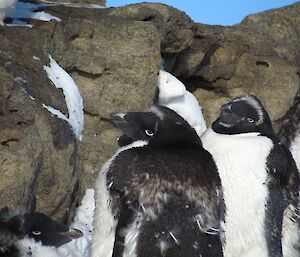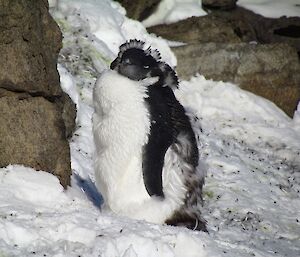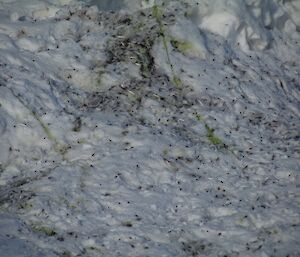As mentioned last week, the sea ice has arrived and looks like it’s here to stay. As Davis is located on a bay (Prydz Bay), the formation of the sea ice is exciting because it provides us with easy access to the huts, islands, icebergs and fjords. In other words, it’s our road system for vehicles (quad bikes and Hägglunds).
Travelling over sea ice is one of the greatest joys here. It’s a wild concept: driving over frozen ocean, and it’s one of the great things about wintering. Before all that can happen, however, we need to make sure it is safe for travel. The process for assessing this is to go out onto the sea ice and take systematic cores to assess ice thickness and quality. Once the ice is 20 cm plus we can walk on it. At 40 cm plus we can drive quads on it, and at 60 cm Häggs are an option. Some of the cores are taken in the same places each year to provide comparative sea ice data over time.
This week Lötter and Tony went out to test the thickness. They were aiming for two long-term coring sites, and measuring regularly on route to ensure the sea ice was 20 cm plus wherever they went. As it was the first outing, they wore dry suits, roped up and had a rescue platform on standby near shore in case someone broke through the ice. There were no problems though as the ice was already pretty thick (28–34 cm).
For those of us looking on from shore, we were treated to a great fata morgana (mirage) with the icebergs looking like ink blots.
The boys did relay one story. When they were out on the ice, they saw an elephant seal’s nose poking through a small hole, taking deep breaths. They watched it for a while, then moved on, walking towards the next coring point, at which time they must have surprised the seal as it gave out an almighty call. Lötter and Tony both got the fright of their life, and nearly lost all bodily function in their dry suits! They definitely would have won an award on station for that outcome.
Kirsten (Station Leader)

